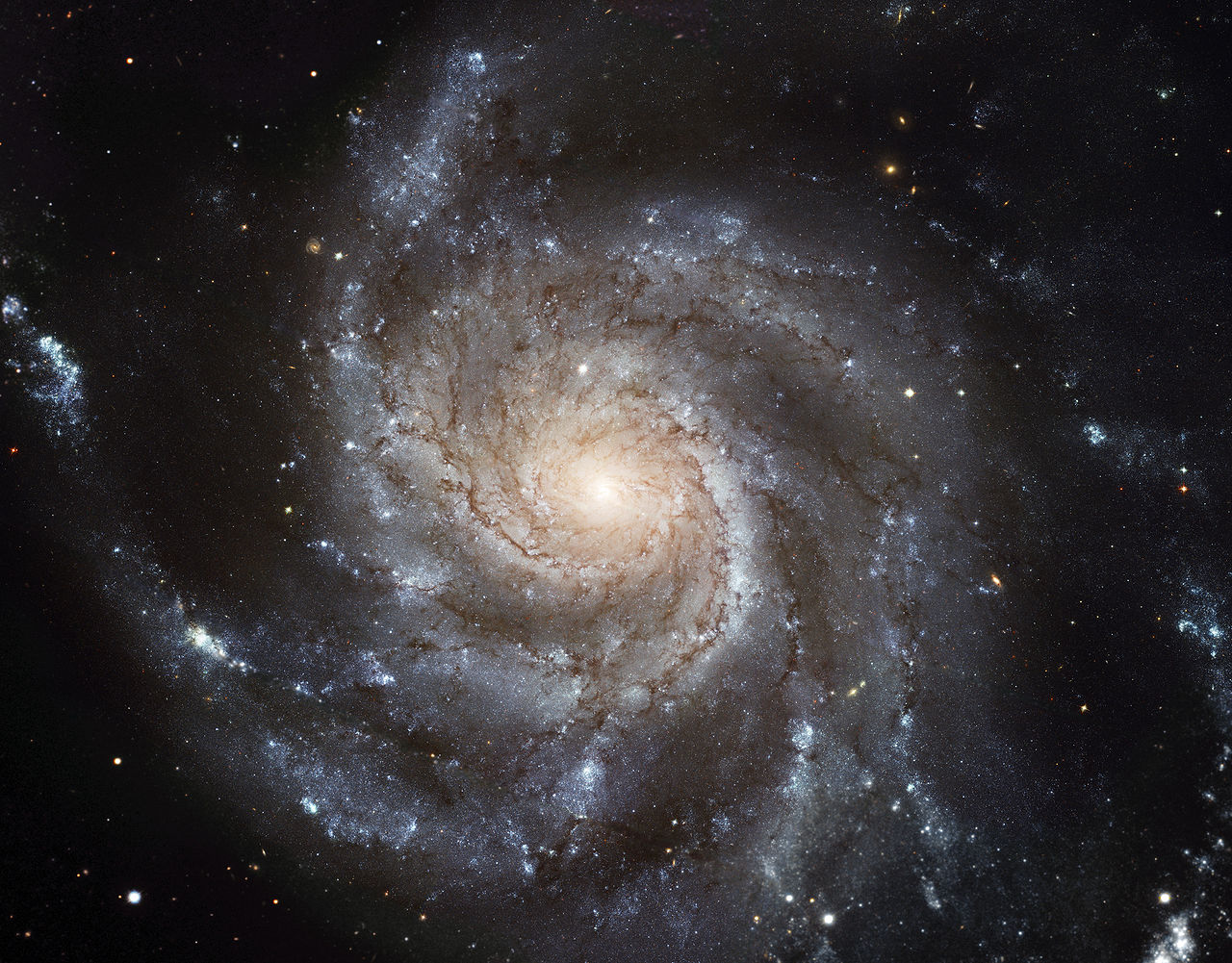M101
Search Here: M101 - Stellar Database
The nearby, face-on, giant spiral M101 provides an ideal laboratory for the study of luminous massive stars. Beginning with the early work of Sandage:1974c on the brightest blue stars, the vast population of luminous massive stars in M101 has been a subject of interest for the last 40 years (Humphreys 1980, Sandage 1983, Humphreys et al. 1983, 1986, 1987). With the launch of The Hubble Space Telescope in 1990, the study of the resolved stellar content of M101 became possible and since then many studies have examined and characterized the immense population of Cepheid variables (Shappee et al. 2011 and references therein), stellar clusters (Bresolin et al.1996, Chen et al. 2005, Barmby et al.2006), HII regions (Rosa and Benvenuti 1994, Pleuss et al. 2000, Garcia-Benito et al. 2011, Sun et al.2012), and supernova remnants (Lai et al. 2001, Franchetti et al. 2012). The next logical step is the identification of its large population of luminous stars including the OB type stars, and the evolved supergiants.
In a series of three papers we present a survey of the massive star population in M101:
Paper I - The Identification and Spatial Distribution of the Visually Luminous Stars, Astronomical Journal, 146, 5, 2013Paper II - Spatial Variations in the Recent Star Formation History, Astronomical Journal, 148, 58, 2014
Paper III - Spectra and Photometry of the Luminous and Variable Stars, Astronomical Journal, 149, 152, 2015.
The Identification and Spatial Distribution of the Visually Luminous Stars
We present BVI photometry obtained from archival HST/ACS WFC images of M101. We have produced a catalog and searchable , database to database of luminous stars with photometric errors less than 10% for V brighter that 24.5 mag. and 50% completeness down to V ~ 26.5 mag. even in regions of high stellar crowding. Using color and luminosity criteria we have identified candidate luminous OB type stars and blue supergiants, yellow supergiants, and red supergiants for future observation. In Paper I we examine their spatial distributions across the face of M101 and find that the ratio of blue to red supergiants decreases by two orders of magnitude over the radial extent of M101 corresponding to 0.5 dex in metallicity. We also discuss the resolved stellar content in the giant star forming complexes NGC 5458, 5453, 5461, 5451, 5462, and 5449 and discuss their color-magnitude diagrams in conjunction with the spatial distribution of the stars to determine their spatio-temporal formation histories.
Spatial Variations in the Recent Star Formation History
We investigate the star formation history (SFH) as a function of radius in M101 using archival HST/ACS photometry. We derive the SFH from the resolved stellar populations in five two arcmin wide annuli. Binning the SFH into time frames corresponding to stellar populations traced by Ha, far ultraviolet (FUV), and near ultraviolet (NUV) emission, we find that the fraction of stellar populations young enough to contribute in Ha is 15%-35% in the inner regions, compared to less than 5% in the outer regions. This provides a sufficient explanation for the lack of Ha emission at large radii. We also model the blue to red supergiant ratio in our five annuli, examine the effects that a metallicity gradient and variable SFH have on the predicted ratios, and compare to the observed values. We find that the radial behavior of our modeled blue to red supergiant ratios is highly sensitive to both spatial variations in the SFH and metallicity. Incorporating the derived SFH into modeled ratios, we find that we are able to reproduce the observed values at large radii (low metallicity), but at small radii (high metallicity) the modeled and observed ratios are discrepant.
Spectra and Photometry of the Luminous and Variable Stars
We discuss moderate resolution spectra, multicolor photometry, and light curves of thirty-one of the most luminous stars and variables in the giant spiral M101. The majority are intermediate A to F-type supergiants. We present new photometry and light curves for three known "irregular blue variables" V2, V4 and V9) and identify a new candidate. Their spectra and variability confirm that they are LBV candidates and V9 may be in an LBV-like maximum light state or eruption.
Spectra from the MMT
M101 - Red Spectra
M101 - Flux Calibration
Blue and red counts vs wavelength; flux calibrated with a 3 box smooth
View the Readme
